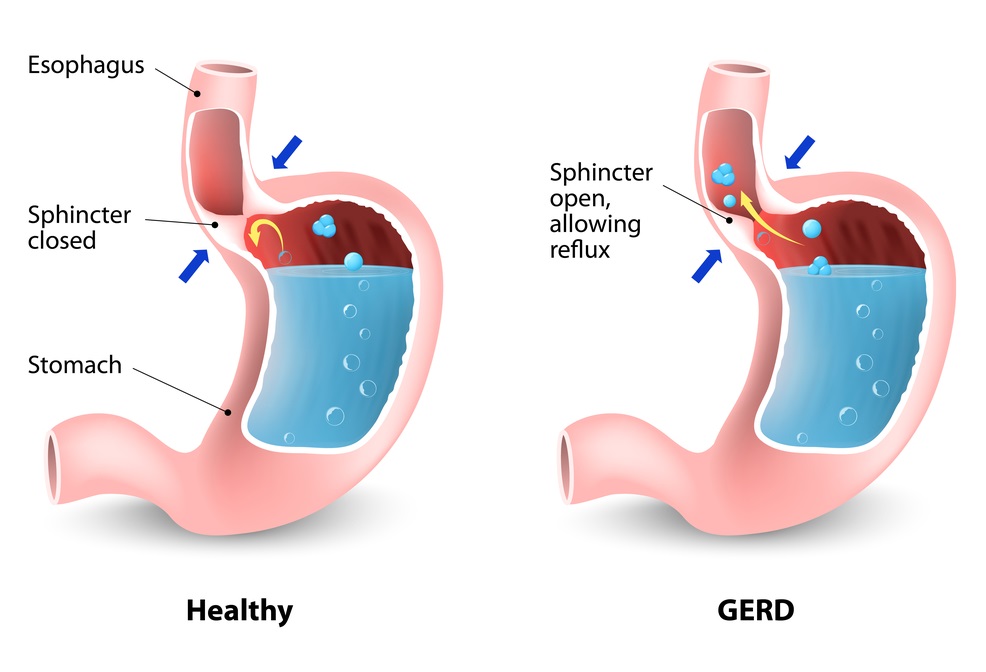
Causes and Complications of GERD
Several mechanisms have been identified as etiologic factors in the development of GERD. Some of the common factors include LES relaxation, Hiatal hernia, esophageal peristalsis, increased intra-abdominal pressure, and lifestyle.
Lower Esophageal Sphincter (LES) Relaxation
The most common cause of GERD is the transient relaxation of lower esophageal sphincter (LES). The lower esophageal sphincter is located where the gut meets the esophagus and is responsible for preventing food and acidic fluids in the gut and out of the esophagus. Other LES pressure abnormalities such as reduction in resting lower esophageal sphincter (LES) pressure or the shorter length of LES also play a role in the development of GERD.
Hiatal Hernia
GERD can also be caused by hiatal hernia. Hiatal hernia may lead to dysfunctional LES, frequent transient LES relaxations, defective peristalsis, and increased esophageal acid exposure.
Esophageal Peristalsis
According to a study, about 20% of patients with GERD were shown to have an ineffective esophageal motility(IEM)[3]. This may lead to slower acid clearance, with more severe symptoms heartburn, respiratory symptoms, and mucosal injury in patients with IEM.
Increased intra-abdominal pressure
Increased intraabdominal pressure may be more apparent in obese people and pregnant women. Studies show a direct correlation between pressure, body mass index, and waist circumference.
Lifestyle
The following are shown to cause GERD: Narcotics, alcohol, nicotine, chocolate, peppermint, calcium channel blockers. In addition lying down after a meal increases chances of GERD.
Complications
Chronic uncontrolled GERD can lead to Esophagitis, Stricture, Barrett’s esophagus (BE) and esophageal adenocarcinoma.
Esophagitis is the initial stage mucosal damage, where there is a breakdown in the integrity of the mucosal lining of the esophagus due to chronic exposure to stomach acids. Esophagitis can lead to fibrosis or stricture, which is the hardening of the tissue in the throat. Stricture can cause difficulty swallowing and vomiting.
Barrett’s esophagus appears with advanced damage from years of poorly controlled GERD . Is a condition in which there are abnormal changes in the cells of tissue of the esophagus. The normal tissue cells that line the esophagus are replaced with cells similar to those that line the intestine. This is known as metaplasia of the esophagus, which over time can lead to high grade dysplasia of cells and eventually adenocarcinoma or more commonly known, cancer. Barrett’s esophagus is closely associated with esophageal adenocarcinoma.




